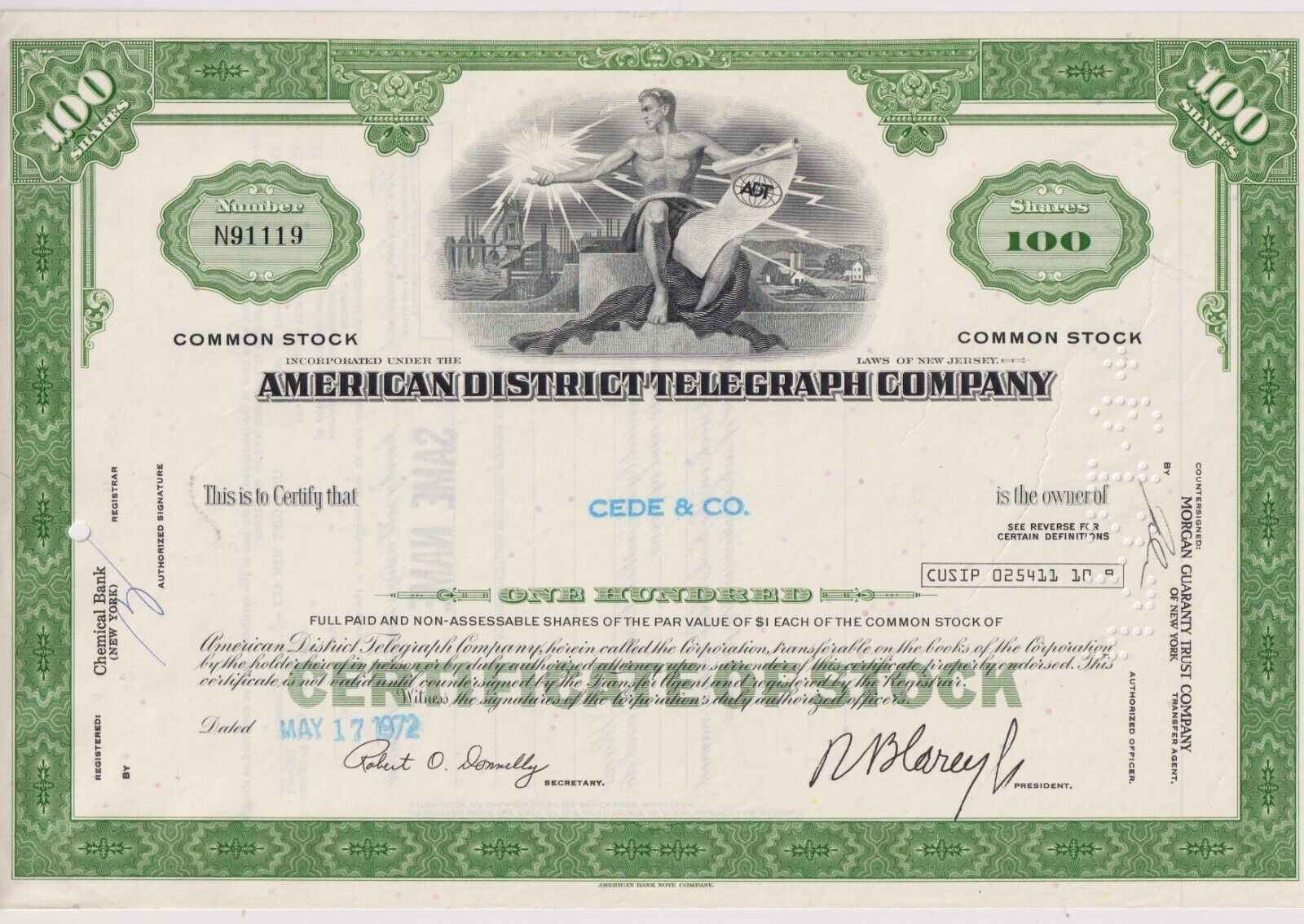-40%
Gray Manufacturing Company Stock Certificate
$ 3.16
- Description
- Size Guide
Description
Product DetailsBeautifully engraved antique stock certificate from the Gray Manufacturing Company dating back to the 1950's, 1960's and 1970's. This document, which contains the printed signatures of a company President and Secretary, was printed by the E. A. Wright Bank Note Company or the Federated Bank Note Company, and measures approximately 12" (w) by 8 1/2" (h).
This certificate's vignette features a detailed, old wall pay phone.
Images
The images presented are representative of the piece(s) you will receive. When representative images are presented for one of our offerings, you will receive a certificate in similar condition as the one pictured; however dating, denomination, certificate number and issuance details may vary.
Historical Context
This Hartford, Connecticut based company was originally known as the Gray Telephone Pay Station Company. The name was changed to the Gray Manufacturing Company on February 19, 1939. The company eventually went bankrupt on September 14, 1976.
The Gray Manufacturing Company made the Audograph (a dictation machine) after World War II. It recorded on thin vinyl discs. One interesting technical feature of the Audograph was its ability to vary the disc's rotational speed continuously, depending on the location of the recording/playback stylus. By spinning the disc faster when the stylus was in the outer grooves, the machine allegedly made better recordings.
A Gray Audograph played in important part in the investigation of the assassination of President John F. Kennedy. On the day of the assassination the Dallas Police Department (DPD) operated two radio channels. Channel I was for normal police radio traffic and channel II was assigned for the use of the presidential motorcade. Each channel was recorded by a different device. Channel I was recorded on a Dictabelt and channel II on a Gray Audograph. Both machines worked by engraving a track into a plastic medium. The Dictabelt used a rotating cylinder and the Audograph used a flat disk, similar to a phonograph record. Both machines were transmission actuated. The recordings were poured over for years, but never served to provide any additional information to identify the number of shots fired that fateful day.










